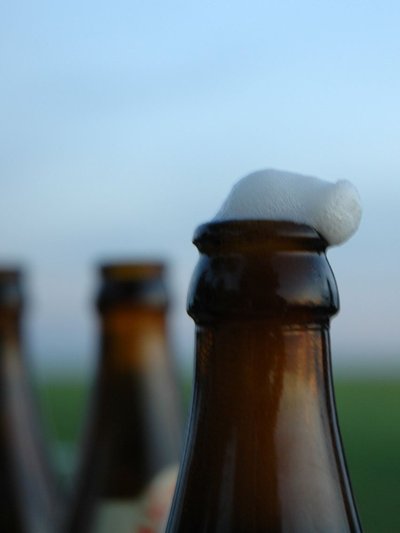Why beer bubbles over - the physics of beer bottle foam-over
Finally, some important physics - researchers have worked out why if you tap the bottom of a newly opened beer bottle it froths up and foams everywhere.
This insight into the science behind foaming beer bottles was acquired by researchers from Carlos III University in Madrid, Spain and Universite Pierre et Marie Curie, Institut Jean le Rond d'Alembert, France who presented their explanation based on the phenomenon of cavitation at the annual meeting of the American Physical Society (APS) Division of Fluid Dynamics.
Cavitation is the mechanism by which bubbles appear in a liquid such as beer after an impact, said Javier Rodriguez-Rodriguez.
After a sudden impact against a bottle’s mouth, back and forth movement of compression and expansion waves will cause bubbles to appear and quickly collapse. The team’s investigation of beer bottle-fluid interactions demonstrated that the cavitation-induced break-up of larger ‘mother’ bubbles creates clouds of very small carbonic gas ‘daughter bubbles’ which grow and expand much faster than the larger mother bubbles from which they split. The rapid expansion of these daughter bubbles gives the foam buoyancy.

“Buoyancy leads to the formation of plumes full of bubbles, whose shape resembles very much the mushrooms seen after powerful explosions,” Rodriguez-Rodriguez explained. “And here is what really makes the formation of foam so explosive: the larger the bubbles get, the faster they rise, and the other way around.” This is because fast-moving bubbles entrain more carbonic gas.
The team’s work is believed to be the first quantitative analysis of the beer bottle foam-over. “We wanted to explain the extremely high efficiency of the degasification process that occurs in a beer bottle within the first few seconds after the impact,” Rodriguez said.
Beyond happy-hour enrichment, the study’s findings can be applied to other engineering systems and serious natural phenomena such as the sudden release of dissolved carbon dioxide in the Lake Nyos disaster.
Six beverage trends predicted for 2026
Demand for customisation, 'protein-ification' and sustainable storytelling are some of...
Making UHT processing less intensive on energy
A nutritional beverages company was seeking a more sustainable way to produce UHT beverages using...
Tasty twist for chocolate alternatives
Food scientists develop two novel flavour-boosting techniques to transform carob pulp into a...








